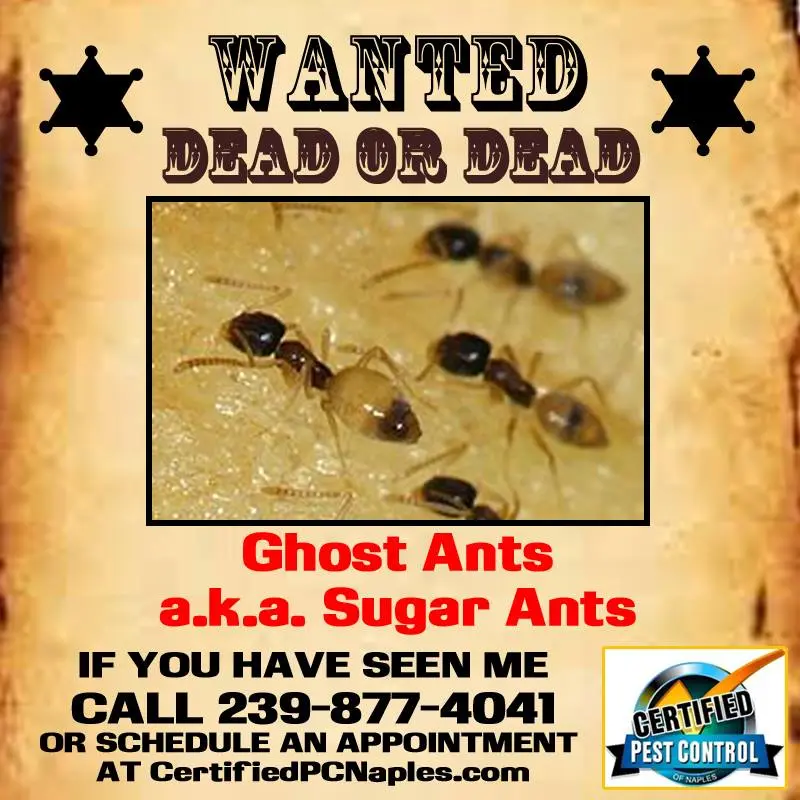Introduction to Ghost Ants: Who Are They?
Ghost ants sound like something out of a spooky story, but they’re very real and could be tiny uninvited guests in your home. Named for their pale color, which makes them almost invisible, these ants are experts at sneaking around. They’re small, with workers measuring about 1.3 to 1.5 mm long. What’s interesting about ghost ants is their love for both sweet stuff and moisture. It’s this love that often draws them into our homes, looking for sugary leftovers and water sources. Originating from tropical climates, they’ve spread to many parts of the world, adapting well to both indoor and outdoor environments. Contrary to what you might think, these ants are social creatures, living in large colonies that could have multiple queens. This social structure means that if you see one, there are likely many more hidden away. Understanding these basics about ghost ants is the first step in managing their impact on your home.
The Lifecycle of Ghost Ants Explained
Ghost ants get their name from their translucent legs and abdomen, which make them nearly invisible on many surfaces. They’re small but can become a huge issue in your home if not dealt with. Understanding their lifecycle is crucial in tackling an infestation. Ghost ants move through four stages: egg, larva, pupa, and adult. The queen lays eggs that hatch into larvae. These larvae are fed and cared for by worker ants. After a few weeks, the larvae transform into pupae. Inside these cocoons, they develop into adult ants. The entire process from egg to adult can take just a few weeks under the right conditions, meaning populations can grow swiftly. Most colonies have multiple queens, allowing them to spread and establish new colonies quickly if not controlled. So, keeping these ants out begins with disrupting their lifecycle. Simple steps like keeping your home clean, especially free from food crumbs, sealing cracks and crevices, and using ant baits strategically can make a big difference.
Spotting a Ghost Ant Infestation in Your Home
Seeing ghost ants in your home means it’s time to act. These tiny pests, named for their pale color which makes them hard to spot, can signal a bigger problem. Look for signs like small, pale ants near food sources or trailing from small cracks in walls or floors. Unlike other ants, ghost ants crave sweets and moisture, so kitchens and bathrooms are their favorite hangouts. If you see them wandering alone or in a line, especially towards sugar spills, fruit on the counter, or pet food, you’re likely facing an infestation. Another key giveaway is their nest. Though hard to find, ghost ant nests indoors are often located in wall voids, behind baseboards, or in potted plants. Pay attention to areas where moisture is common—like under sinks or in damp basements. If any of this sounds familiar, it’s time to tackle the problem head-on.
How Ghost Ants Enter Your Home and What Attracts Them
Ghost ants sneak into your home in search of two main things: shelter and food. They’re tiny, so they can slip through cracks in windows, doors, and foundations almost unnoticed. Even a small opening is like a big welcome sign for them. Once inside, what really attracts them is the sweet stuff. They love sugary foods, which is why you might find them marching towards spills on your kitchen counter or scouting out that sticky jar of jam you left out. But it’s not just the sweets; they’re also drawn to moisture. Leaky pipes, damp basements, and even your pet’s water bowl can turn your home into ghost ant paradise. So, if you’re wondering why these little invaders chose your house, it’s probably because it’s cozy and has a lot of tasty treats and water sources.
The Impact of Ghost Ants on Your Home and Wellbeing
Ghost ants might seem tiny and harmless at first glance, but their impact on your home and wellbeing can be more significant than you think. These pesky intruders are not just a simple nuisance. First off, ghost ants are known for their strong love for sweets, leading them into your home in search of sugary substances. This means any exposed food can quickly become contaminated by these ants, posing health risks through the potential spread of bacteria they have encountered on their journey into your home. Moreover, ghost ants, like many other ants, have a knack for finding the tiniest cracks and crevices to make their way inside, which can highlight areas in your home in need of sealing or repair, potentially saving you from other pest invasions or water damage down the line. However, perhaps the most troubling aspect of a ghost ant infestation is the stress and annoyance it can cause. Trying to rid your home of these unwelcome guests can feel like a never-ending battle, impacting your peace of mind and overall wellbeing. The key is not to underestimate these small invaders; understanding their lifecycle and behavior is the first step in effectively managing their presence in your home.
Preventive Measures to Keep Ghost Ants Away
To keep ghost ants out of your home, focus on making your space unattractive to these tiny invaders. First off, clean up any spills immediately—ghost ants are drawn to sweet stuff. Regularly take out the trash and don’t leave dirty dishes around. Make sure to store food, especially sweets, in sealed containers. Next up, seal any cracks and crevices around doors, windows, and other entry points. These ants are tiny; they don’t need a large space to get in. Consider using natural repellents like vinegar or essential oils around common entry points; some folks find success keeping ants at bay with these. Remember, it’s not just about blocking their way in, but also about not giving them a reason to come in the first place. Keep your place clean, dry, and tightly sealed. It’s easier to prevent an invasion than to get rid of one.
Natural Remedies to Combat Ghost Ant Infestations
When facing a ghost ant infestation, you don’t necessarily need to reach for harsh chemicals. Natural remedies can be effective and less harmful to your family and pets. First, a blend of vinegar and water is your go-to. Ants hate the smell, making it a powerful deterrent. Mix a 50⁄50 solution and spray it along their trails and entry points. Second, diatomaceous earth is a non-toxic wonder. Sprinkle it around the areas they frequent. It’s harmless to humans but lethal for ants, cutting through their exoskeletons. Third, lemon juice works wonders, too. Its acidity disrupts their scent trails, confusing and repelling them. Just squeeze some lemon juice or place lemon peels where you’ve seen them march. Lastly, peppermint oil isn’t just for fresh breath. Its strong scent is a natural ant repellent. A few drops mixed with water can create a spray that keeps them at bay. Remember, consistency is key with natural remedies. Keep at it, and you’ll see the back of those ghost ants without harming your home environment.
When to Call a Professional: Dealing with Severe Ghost Ant Problems
If you’ve tried all the DIY fixes—like cleaning up crumbs right away, sealing up entry points, and setting up ant baits—but the ghost ants keep coming back, it’s time to call in the pros. When you spot them marching one by one across your kitchen counter every few days, despite your best efforts, you’re dealing with a severe infestation. Professionals have access to more powerful solutions that aren’t available over the counter. They can also find and treat the nest directly, something that’s tough to do on your own. Plus, they understand ghost ant behavior and can help prevent them from returning. Remember, the goal isn’t just to kill the ants you see; it’s to address the root of the problem. So, if you’re seeing ghost ants make a frequent appearance or notice them in large numbers, don’t wait. Get a professional to assess the situation as soon as possible. It’ll save you a ton of frustration and keep your home ant free.
Regular Home Maintenance to Prevent Future Infestations
To keep ghost ants out, being proactive is your best weapon. These tiny invaders love moisture and crumbs. Start by fixing leaky faucets and pipes to cut off their water source. Make sure your kitchen is spotless. Wipe counters clean and sweep floors to remove food bits they can feast on. Store food in tight containers. Check your home’s exterior for cracks and openings. Seal them. This not only blocks their entry but also other pests. Regular cleaning and maintenance starve ghost ants out and seal their way in, safeguarding your home from future invasions.
Summary and Final Thoughts on Managing Ghost Ants
Managing ghost ants is not just about tackling them head-on; it’s about understanding their lifecycle and hitting them where it hurts. These tiny intruders are attracted to sweets and moisture, making your home their perfect haven. But remember, the key to evicting these guests lies in prevention and persistence. Seal up those cracks, keep things dry, and always clean up spills and crumbs. Child’s play, right? If you do find yourself in a showdown, don’t hesitate to set out baits they can’t resist. And if things get tough, calling in a pro isn’t giving up; it’s choosing to fight another day. By keeping your home less inviting to these pests, you’re taking the first step in a long-term strategy against ghost ants. So, stay vigilant, be proactive, and don’t let these ghostly invaders haunt your home.

